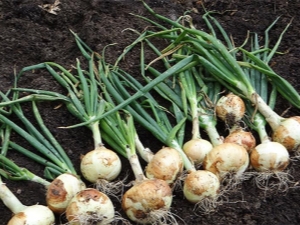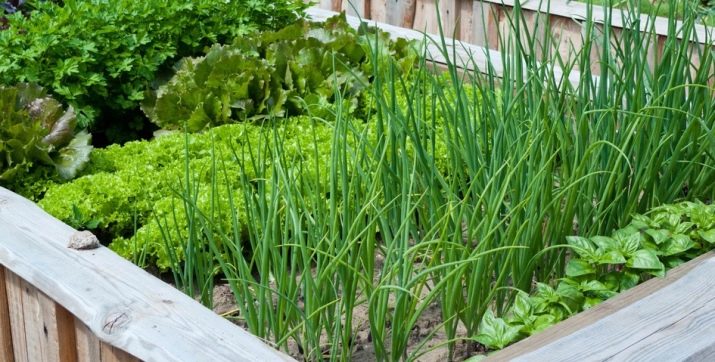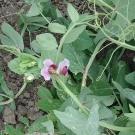What crops can be planted after onions?

Some summer residents are surprised that when planting a single crop at the same place, the crop is reduced annually.The earth is “tired” of homogeneous plants. To avoid this, you should alternate the vegetables, then the soil is not depleted, but saturated with useful substances and trace elements. It is necessary to tell in detail what can be planted after onions, as the most early plant in the gardens.
Crop rotation rules
There are several reasons why crop rotation should be followed.
- During the entire maturation period, the plant uses the nutrients and trace elements from the earth that it needs. Each type of vegetable nutrition is special. If every year to plant the same plants in one place, the soil will be depleted in relation to the substances necessary for the given crop. Therefore, the next season it is recommended to plant vegetables from another family, they will receive the necessary nutrients, which for them in the soil is still quite enough.
- Some cultures emit products harmful to the functioning of plants of the same species that do not affect other species.
- Each family has different pests and diseases, so vegetables in the garden should be alternated in order to prevent diseases and parasites.
Basic rules to follow.
- There are plants that can be planted in one place for only a year - these are tomatoes, potatoes, strawberries and beans. The remaining species alternate every 3 years.
- It is possible to return the culture to the garden in the event that land in front of him siderata. They will clean the soil and saturate with nutrients.
- Do not alternate plants from the same family.
- It is necessary to grow crops with different root systems. For example, onions and carrots, since their roots are at different levels.
If you follow these rules, you can regularly get a good harvest of onions and other vegetables and preserve the fertility of the soil.
Suitable options
Gardeners with more experience are planning ahead than filling the garden bed for the next season. If you used to grow onions in the garden, then it is better to plant the listed crops after it.
- The first and most suitable is carrots and beets. Together with the onions are the best neighbors in the garden. They perfectly complement each other, and they are not afraid of pests, because these cultures have the ability to scare them away from each other.
- Tomatoes. These vegetables feel well in place of onions. But in order for the harvest to be good, it is recommended to fertilize the soil before planting.
- Can be planted cucumbers. These vegetables constantly require new soil. When disembarking after onions, it gets along well in the soil and brings a great harvest. Practiced joint planting of these vegetables.
- Strawberry. It survives well on the spot where the bow was previously. The soil for this plant is characterized by a weak alkaline environment, as well as for onions, and the substances and beneficial trace elements left after the bulbs provide strawberries with a good yield.
- Cabbage and radishes. Good alternating cultures that get along well after others. These plants almost do not deplete the soil.
- Pepper is also a good option.
- Eggplant. However, this plant can be grown only one season on one soil. Then it will be possible to land it in the same place only in 2 years.
Onions are planted in spring, and harvested quite early, and you should never leave a bed without culture. Some prefer to plant radishes and lettuce - the perfect solution for an unoccupied place. But there are late varieties that ripen at the end of autumn, so there is an assumption that there will not be enough time to ripen a full-fledged crop.
In the summer, after collecting
Usually the onions ripen by mid-summer, and it is removed from the garden beds. After that, gardeners ask themselves the question: “What is better to plant on this place until the autumn? ". This is an important question, because the plant on the site must have time to ripen to frost. It should be planted such vegetables that are unpretentious to weather conditions and resistant to cold. There are options to plant early-ripening varieties, then your harvest will be ready in September.
- Salads They can be planted throughout the summer with a gap of 10-15 days.
- Cabbage. There are early-maturing varieties that can be planted in July. Just before sowing, be sure to moisten the soil.
- Asparagus beans or peas. It is recommended to use when planting bush varieties of asparagus beans. They grow into a small bush with fruits that ripen at the same time.
- Radish. It can be planted in August and get juicy roots.
Next year
Suitable varieties of vegetables that can be planted behind the onion are dismantled. It should be noted, and those plant species, after which you can plant onions for the next season. In the first, it is very important that the soil for planting is located on the well-lit side (under the sun), it should contain many nutrients such as potassium and phosphorus. Tomatoes, pumpkin, cabbage, peas and siderata are the best crops, after which it is good to plant the bulbs.
Gardeners planted onions in early spring or at the end, but you can do it in July, in this case, the soil is perfect after harvesting new potatoes.
Beginning gardeners are often interested in the question: “Is it possible to plant garlic with onions or after each other? ". Here is a very controversial answer. One half of experienced growers say that garlic drives off pests due to its unusual odor. The second part believes that these two cultures feed on the same substances, therefore, there is a shortage of food and the fruits will be small.
Siderata
In order to fill the soil with nutrients, while improving the structure, many gardeners choose plants such as green manure. These are special crops that normalize the condition of the soil. With the growth and development of siderats saturate the soil with nitrogen and suppress weeds.
Siderats include green plants that grow rapidly. Due to their impressive root system, weed does not receive enough nutrition and does not grow. These plants are annual, their roots rather quickly rot, and many channels appear through which the soil is saturated with moisture and oxygen.
You can sow siderats throughout the season, but it is best to do this before you plant the main crop. Before planting onions, it is recommended to sow precisely those plant species that enrich the soil with minerals and penetrate into its deeper layers.
There are the following types of sideratov:
- yellow lupine (it feeds the soil with nitrogen and has rather large roots);
- Vika (also nourishes the soil with nitrogen);
- field peas (tolerates a climate with low temperatures, is cultivated in March, can be used on medium and heavy soils);
- rye (can be sown together with a vetch, usually in September, prevents the growth of weeds);
- garden bean (not suitable for planting peas, beans and other crops of the legume family);
- turnip (suitable for growing onions, sow can be in the spring).
It should be noted that the most suitable siderata before planting onions are lupine, pea, turnip and seradella. These plants have a rich green mass, thereby enriching it with nitrogen in the soil. During the harvest season of bulbs, legumes are most often used.
What to avoid
In fact, the bow is universal for planting almost all crops. However, there are exceptions. It is not recommended to plant garlic after the bulbs. These two roots belong to the onion family. In addition, there are reasons for the impossibility of their alternation.
- Vegetables will lack nutrients because their roots absorb food equally quickly.
- These crops have the same pests and diseases. It is recommended to plant a plant that is resistant to the previous disease.
However, after garlic is best to plant dill, he will have time to please you with the harvest in the same year.
The benefits of joint landings
Naturally, the first advantage of joint planting is to save space in the garden, while getting more yield. Properly selected cultures that grow together, positively affect each other, produce mutually beneficial organic matter. There are additional positive aspects.
- Mixed beds are a principle of natural farming, through which it is possible not to use chemical fertilizers and get a tasty and healthy harvest.
- Thanks to competent planning of planting plants in the garden, you get a good harvest throughout the season.
- Soil depletion is prevented if crops with different nutritional requirements are planted.
- Decorative, beautiful flowering in the garden.
- Reducing the likelihood of plant damage by pests and unpleasant diseases.
Each culture has its own role. There are main and accompanying (additional) cultures. The first creates a favorable environment and protects the bed from weeds and drying. The second may be flowers, herbs, green manure, as well as various vegetables.
As a main crop, it is better to plant one that matures slowly, and the additional one - precocious. This is done so that while one grows up, have time to collect the second one and free up more space for the development of the main culture. The main thing - do not make a mistake in the correct combination of the two types.
The technology of proper crop rotation is shown in the video below.













































